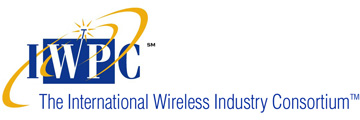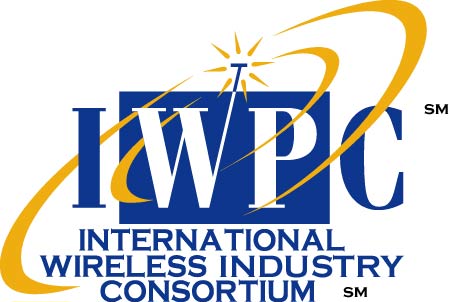Radio Access Networks - Active Antenna Evolution
Beam-steering, Technology Innovation and Massive MIMO
Hosted
by: 
When
September 15-17, 2015
Introduction
According to a recent research, the global market for LTE capable RAN antennas, including passive and active types, is projected to reach almost US$4.0 billion in 2015. Multi-band antennas are the hot segment, and although active antennas are a key driver for LTE, until now, we have seen limited uptake. This workshop will consider how active antenna systems will evolve to meet continuing RAN performance challenges and support denser capacity layers. We will explore challenges and opportunities for small cells, backhaul, and macro layer refresh. Core to the discussion will be Active Antenna Systems, Carrier Aggregation across multiple bands, Coordinated Multipoint and Cloud-RAN as well as Massive MIMO.
Workshop Goals
- Assess results from recent technology trials and integrated antenna deployment
- Understand the market and drivers for active antennas
- Explore trends and innovation in cellular base stations and active antenna technologies
- Understand alternative antenna systems and solutions
- Consider what technologies will be deployable prior to 5G and how will antennas evolve beyond 2020?
Agenda
|
DAY 1 Tuesday September 15
|
13:00 Tour Registration
14:00 Orange Innovation Garden
DEMONSTRATION: Active antenna systems tested in Orange Deutsche Telekom network. |
Transport to site from hotel |
||||||
|
19:00 |
Evening Reception |
Hotel |
||||||
|
DAY 2 Wednesday September 16
|
Networking Breakfast and Continued Registration |
Hotel
|
||||||
|
08:00 |
Opening Remarks and Self-Introductions Each person will be asked to introduce him/herself and show how they can contribute to this process. |
|
||||||
|
09:00 |
Host Keynote Opening Remarks and Presentation
|
Vertical Sectorisation Trial Conclusions and Future Developments Senior Project Manager
SON for Vertical and Virtual Sectorisation - SEMAFOUR Project R & D Engineer
|
||||||
|
10:30 |
Networking Break |
|
||||||
|
11:10 |
Mobile Operator Perspectives
|
Challenges and Requirements for Active Antenna Deployments Senior Expert, Mobile Access
|
||||||
|
11:50 |
Networking Lunch |
|
||||||
|
12:50 |
Mobile Operator Perspectives (continued)
|
Active Antenna Systems Standards Review, Future Requirements and Expectations Project Manager
|
||||||
|
13:30 |
OEM Perspectives
|
Reconfigurable Antenna Systems and 3D Channel Modeling (topic TBC) Expert, Multi-Antenna Systems
Active Antenna Systems - Value Leader for Mobile Broadband Networks Director of Joint Innovation Management Dept.
|
||||||
|
14:50 |
Networking Break |
|
||||||
|
15:30 |
OEM Perspectives (continued)
|
Massive MIMO: Essential Component Technology for 5G Sr. Research Specialist
Advancing Network Capacity through Antenna Technology
Dir., Wireless Network Engineering
|
||||||
|
16:50 |
Antenna Evolution Panel |
How can the Antenna
Eco-System Help Mobile Operations
Meet Continuing Network Challenges?
Technical
Dev. Strategist
Panelists Include:
|
||||||
|
17:30 |
Adjourn |
Technical Dev. Strategist
|
||||||
18:30 |
Networking Dinner
|
Restaurant: Folk Gospoda | ||||||
|
DAY 3 Thursday September 17 |
|
|
||||||
|
08:00 |
Mobile Operator Perspectives (continued)
|
Virtual Small Cells
R&D Engineer
|
||||||
|
08:50 |
Technology Enablers
|
Boosting the Capacity of Mobile Wireless Networks with High Definition Active Antenna Arrays CTO
Millimeter-Wave and Massive MIMO for 5G Program Director, Perceptive Systems for the Internet of Things
|
||||||
|
09:50 |
Technology Enablers (User Equipment perspective) |
Handset Antenna Properties and Their Influence on Massive MIMO System Performance
Master Engineer,
|
||||||
|
10:30 |
Networking Break |
|||||||
|
11:10 |
Technology Enablers (continued) |
OTA Testing of Base Stations Senior Antenna Specialist
Current Developments and Future Challenges in Radiated Testing of MIMO Devices Lead Technologist
|
||||||
|
12:10 |
Networking Lunch |
|||||||
|
13:10 |
Antenna Evolution |
Passive
Antenna Considerations, Economics,
Evolution, and Innovation
Chief Technology Officer
|
||||||
|
13:40 |
Technology Enablers (continued)
|
RFIC Architectures and Technologies for Massive MIMO at mmWave Frequencies
Technical Marketing Manager
Active Antennas to Massive MIMO - System Analysis
Principal Systems Architect
High Frequency PCB Material Considerations for Use in Active Antennas
Senior Business Development Manager |
Advanced Connectivity Solutions
|
||||||
|
15:10 |
Networking Break |
|
||||||
|
15:40 |
Technology Enablers (continued)
|
Adaptive Base Station Antenna Arrays - Concepts and Constraints
Professor, Institute of Radio Frequency Technology
New Architectures of Antenna Arrays with Beam Steering Boosting PhD Student
|
||||||
|
16:40 |
Active Antenna System Investigation
RAN Principal Engineer
|
|||||||
|
17:10 |
Takeaways and Closing Remarks |
|
||||||
|
17:45 |
Adjourn | |||||||
|
18:30 |
Dinner (Dutch*)
*= in this context, Dutch is a term which means that each person will be responsible for their own dinner costs.
|
For those who desire to join us, we get together to enjoy good friends, good food and good wine. |
FAQs
- What is the deadline for presentation/handout materials?
- What can I do to prepare for speaking at an IWPC workshop?
- Who are the attendees?
- What are the costs/registrations fees?
- Hotel information?
- What are the travel options from the airport to the hotel?
- Are there any audiovisual requirements?
- Will business cards be collected?
- What is the dress code?
- How will handout materials be provided?
- What is the deadline for
presentation/handout materials?
Deadline for electronic version of presentation/handout materials: Thursday, September 3, 2015
- What can I do to prepare for speaking an at IWPC workshop?
Click on the link below for a short video guide regarding preparing for and improving your IWPC presentation:
- Who are the attendees?
- We do not permit the Press.
- We do not permit Analysts.
- We do not permit Consultants.
- We do not permit 3rd party sales reps.
- We only permit "first hand knowledge experts" in business and technology issues, prepared to contribute to the discussion.
- What are the costs/registrations fees?
ALL Hosts, Speakers, Panel Members and Attendees will be asked to cover out-of-pocket workshop costs such as conference room costs, food (Social Reception plus First Day breakfast/lunch/dinner plus Second Day breakfast/lunch plus Breaks), audio/visual costs, etc.
These costs will be $987. (USD) per person. (For IWPC Members only.)
ALL Hosts, Speakers, Panel Members and Attendees will be asked to pay this fee in advance with either Visa, MasterCard, American Express, cash, personal check or business check. Make checks payable to IWPC.
- Hotel information?
Hotel Novotel Warszawa Centrum
ul Marszalkowska 94/98
00-510 WARSAW, Poland
Phone: +48 22 5960000
Fax: +48 22 5960647
Email: [email protected]
HOTEL WEBSITE
You may make your hotel reservations by calling the hotel directly +48-22 5960000 or send an email to [email protected]; please mention IWPC when making your reservation. The IWPC room block rate is 419 PLN per night.
The cut-off date for reservations is Monday, August 24, 2015. After that date, rooms cannot be guaranteed at the IWPC rate.
- What are the travel options from the airport to the hotel?
Directions and transportation options will be posted as soon as possible.
- Are there any audiovisual requirements?
A Computer Projector will be available for the speakers.
In addition, we audiotape all presentations and the interactive discussions. Post workshop, presentations are made available to IWPC Members on the IWPC WEB site, along with “recordings” of all presentations and panel sessions.
- Will business cards be collected?
Business cards will be collected at the door from all attendees. We will make copies of these cards, which will be available to all who provided a business card.
- What is the dress code?
Business casual suggested. No ties, please!
- How will handout materials be provided?
For ALL IWPC members:
All IWPC members are invited to submit materials to be included in the online workshop folder in the IWPC Research Library. This should NOT BE SALES MATERIALS. Rather, we suggest it contain technical information about your technology as it relates to the workshop topics.
For all companies who will be making a presentation at the Workshop:
You are invited to submit an advance copy of your presentation, complete with graphics and illustrations.
These materials will be included on the IWPC website Research Library.
Please submit these materials either by email, as a Word for Windows file, Power Point files or PDF files.
SUBMISSION OF PRESENTATION:
- Go to www.iwpc.org
- Click on IWPC Activities Tab
- Under Workshops: Radio Access Networks Active Antenna Evolution
- Click on Submit Presentation Proposal. Complete the form and attach your presentation.
- Once we receive your presentation we will send an email confirmation.
AS BACKUP, PLEASE BRING AN ELECTRONIC COPY USB STICK WITH YOU!









